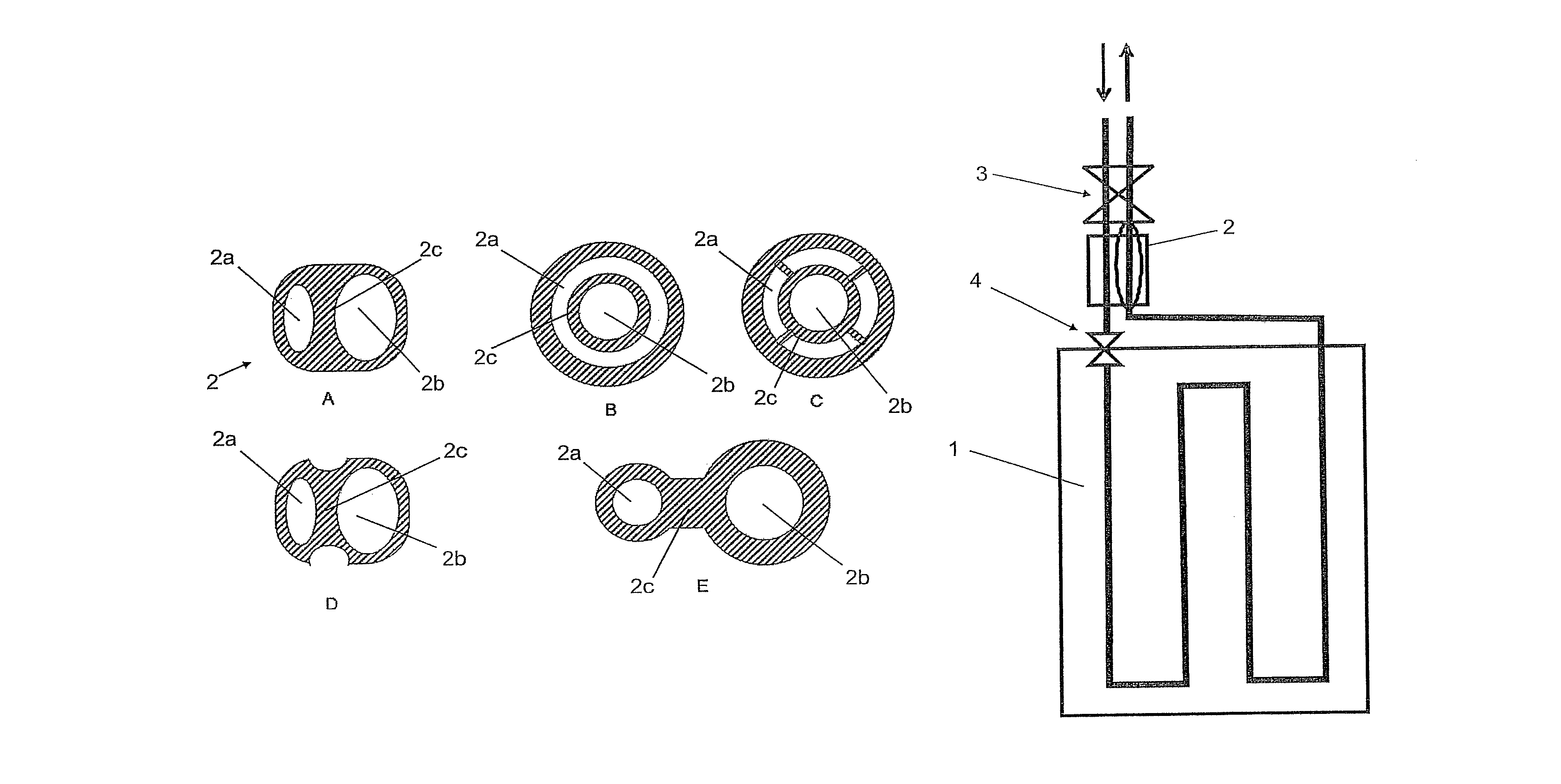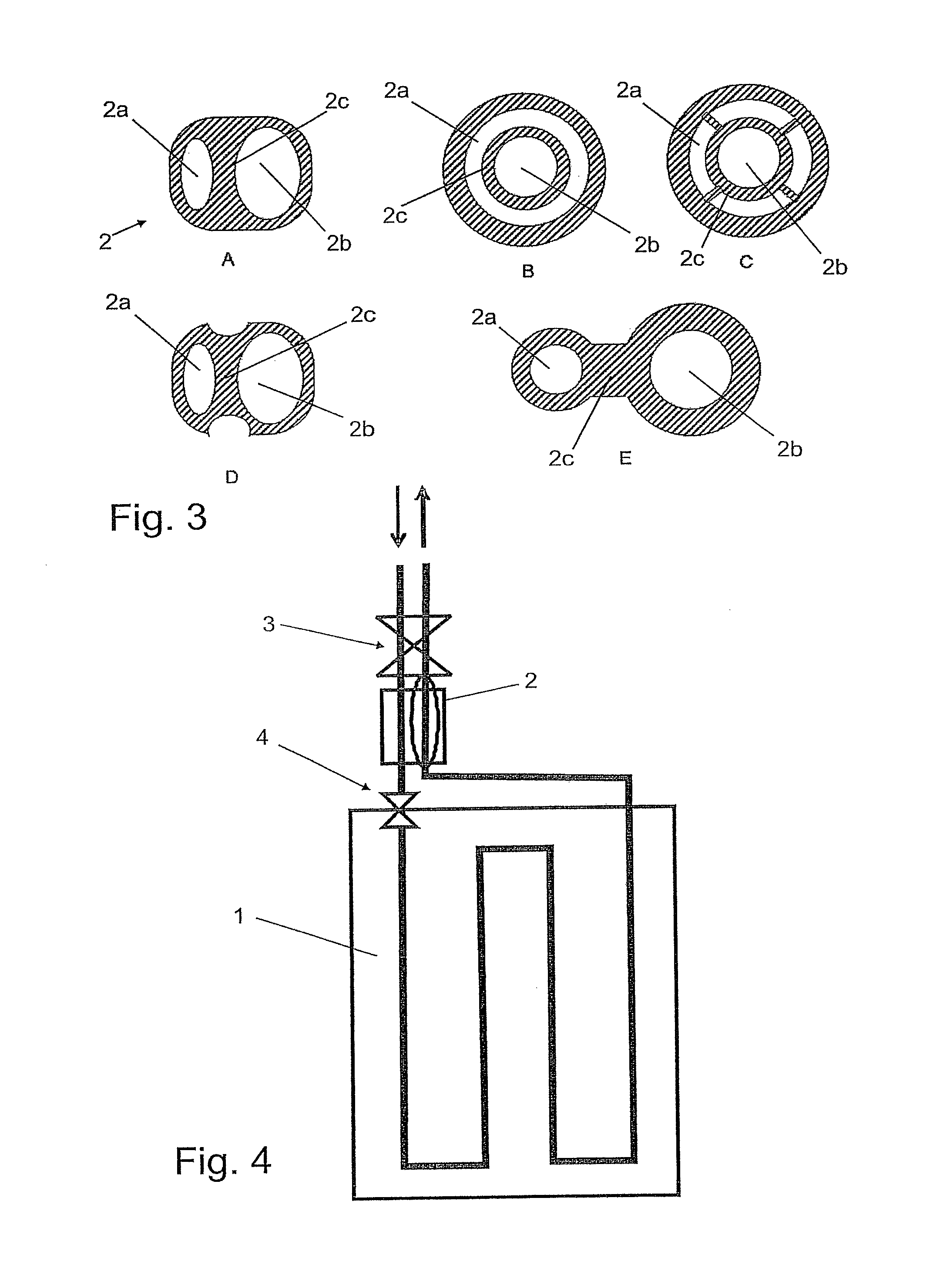Evaporator for a refrigeration circuit
a refrigeration circuit and evaporator technology, applied in the direction of cooling fluid circulation, lighting and heating apparatus, domestic cooling apparatus, etc., can solve the problems of unfavorable evaporator design, unfavorable evaporator generalization, and uneven heat dissipation across the entire evaporator, and achieve the effect of simple design
- Summary
- Abstract
- Description
- Claims
- Application Information
AI Technical Summary
Benefits of technology
Problems solved by technology
Method used
Image
Examples
Embodiment Construction
[0027]The evaporator shown in FIG. 1 comprises an evaporator region 1 and a heat-exchanger element 2 attached thereto. Evaporator 1 is designed as a flat-tube evaporator for conditioning air L for a passenger compartment. To optimize the capacity thereof and improve homogeneity, it is divided into six blocks in the present case, through each of which a refrigerant K flows in succession. The evaporator region is therefore in the form of a heat exchanger that is thermally connected to the exterior region, wherein the heat-exchanger element is substantially in the form of an internal heat exchanger.
[0028]A thermostatic expansion valve 3, as a first expansion device, is disposed upstream of heat-exchanger element 2, wherein an inflowing stream of refrigerant is regulated by expansion valve 3. The stream of refrigerant emerging from the evaporator likewise flows through the expansion valve, and is regulated depending on the pressure and temperature of the emerging stream. Overheating of ...
PUM
 Login to View More
Login to View More Abstract
Description
Claims
Application Information
 Login to View More
Login to View More - R&D
- Intellectual Property
- Life Sciences
- Materials
- Tech Scout
- Unparalleled Data Quality
- Higher Quality Content
- 60% Fewer Hallucinations
Browse by: Latest US Patents, China's latest patents, Technical Efficacy Thesaurus, Application Domain, Technology Topic, Popular Technical Reports.
© 2025 PatSnap. All rights reserved.Legal|Privacy policy|Modern Slavery Act Transparency Statement|Sitemap|About US| Contact US: help@patsnap.com



